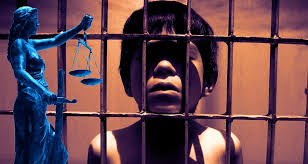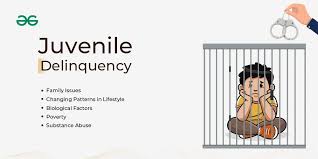Juvenile justice: rehabilitation versus punishment
- ByAdmin --
- 21 Sep 2024 --
- 0 Comments
Juvenile justice: rehabilitation versus punishment
A legal system known as juvenile justice was created to deal with offenses committed by kids, usually those under the age of 18. a set of rules, guidelines, and practices pertaining to the handling of minors facing criminal charges. The system seeks to meet the needs of the young person while striking a balance between community safety and rehabilitation.
Juvenile justice laws:
The Juvenile Justice (Care and Protection of Children) Act, 2015, which replaced the Juvenile court (Care and Protection of Children) Act, 2000, is the primary statute governing India's juvenile court system. This act covers the Juvenile Justice System in India and provides guidelines for the protection, welfare, and care of children who are in legal trouble as well as those who are not. The 2021 amendment added provisions for foster care and adoption of children who are in extreme need of care and protection. • The Act defines a juvenile as any person under the age of 18. It also supported initiatives meant for the comprehensive rehabilitation and social reintegration of juvenile offenders.
The Concept of "PUNISHMENT": The usual approach to delivering justice in criminal instances is punishment. The idea is that those who are scared of punishment are less inclined to conduct crimes; on the other hand, those who do so must be willing to incur significant expenses as a result of their actions. In addition to fines and incarceration, other penalties include the death penalty.
When a juvenile engages in delinquent behavior, punishment is applied, with the goal of being remedial as opposed to punitive.
REHABILATION: In the context of the juvenile justice system, rehabilitation refers to the process of assisting a young offender in making a successful transition back into society. Juveniles differ from adults and have a larger capacity for rehabilitation, which is the foundation of rehabilitation theory. The juvenile's offense, the circumstances that led to it, therapeutic assistance, skill development, and engaging them in yoga and other mind-expanding activities are all part of the rehabilitative process.
PUNISHMENT VERSUS REHABILTAION: Studies have demonstrated that rehabilitation strategies, such as job training, education, and mental health care, lower recidivism rates. Conversely, punitive measures possess the ability to terminate illicit conduct while holding violators responsible for their actions. The Juvenile Justice (Care and Protection of Children) Act, 2015 established the juvenile justice system, which treats juvenile offenders with a rehabilitation-centric mindset. The juvenile justice system's rehabilitation-centric approach is based on the idea that young offenders have the capacity to change. This method acknowledges that a variety of socioeconomic, familial, and psychological factors might contribute to adolescent criminal conduct.
• The system works to divert young people from a career in crime by addressing these issues and providing counseling, education, skill development, and vocational training.
•When a juvenile, between the ages of 16 and 18, commits a heinous offense, the Juvenile Justice Board may decide to try the juvenile as an adult. This clause highlights the necessity of keeping rehabilitation and accountability for serious offenses in check.
The Juvenile Justice Act, 2015 mandated that the preliminary assessment determine the child's physical and mental capacity to commit the crime and whether the child should be tried as an adult or a juvenile. The Supreme Court held in THIRUMOORTHY VERSUS STATE REPRESENTED BY THE INSPECTOR OF POLICE, 2024 LiveLaw (SC) 262 that the conviction of the accused child, a "child in conflict with law," cannot be sustained.
Conclusion:
While rehabilitation is a top priority, the Juvenile Justice (Care and Protection of Children) Act, 2015 recognizes that there are times when the needs of society and justice demand a proportionate response to serious crimes. Finding the ideal ratio between rehabilitation and punishment can be challenging, and it often relies on the particulars of each situation. Each case must take into account the age of the offender, the type of offense committed, and the possibility of rehabilitation. The juvenile justice system in India aims to direct young offenders toward a path of change and community reintegration by establishing a comprehensive framework that places a high priority on rehabilitation while upholding accountability.





0 comments